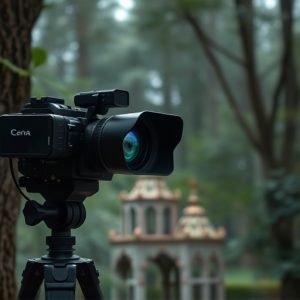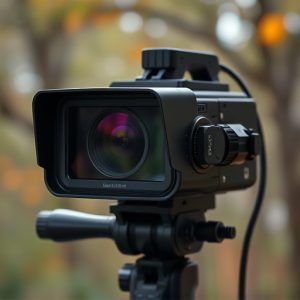Uncovering Hidden Cameras: Protecting Kids with Micro Camera Detection Tips
Micro cameras disguised as everyday objects offer parents a discreet tool for child safety in the di…….
Micro cameras disguised as everyday objects offer parents a discreet tool for child safety in the digital age. Strategically placed, they enable remote monitoring and real-time interaction without infringing on children's privacy. Detecting these hidden cameras requires digital forensics, heat sensing technology, and infrared cameras. Balancing technology and privacy is crucial, emphasizing transparency and adherence to regional data protection laws to ensure secure handling of child protection measures.
Uncover the insidious world of hidden monitoring devices with our comprehensive guide. In an era where privacy is paramount, understanding micro cameras for child protection is essential. We explore innovative techniques to detect these covert signals, empowering parents and guardians with knowledge to safeguard their loved ones. From identifying subtle indicators to employing advanced technology, this article provides valuable insights. Additionally, we delve into legal considerations, ensuring your rights while fostering a secure environment for children.
- Understanding Micro Cameras for Child Safety
- Techniques to Detect Hidden Monitoring Signals
- Ensuring Privacy and Legal Considerations
Understanding Micro Cameras for Child Safety
Micro cameras, often disguised as everyday objects, have become powerful tools for ensuring child safety in today’s digital age. These tiny yet sophisticated devices offer parents and caregivers a discreet way to monitor children’s activities, providing peace of mind and an additional layer of protection. By integrating micro cameras into their safety strategies, folks can navigate the complexities of modern childrearing with enhanced awareness.
For instance, micro cameras can be placed in strategic locations within a child’s room or play area, allowing parents to remotely observe and interact without intruding on their privacy. This technology enables caregivers to quickly respond to any concerning situations, ensuring the well-being of their children. With real-time video feeds and alerts, these micro cameras serve as an effective game changer in safeguarding young ones, especially when left unsupervised.
Techniques to Detect Hidden Monitoring Signals
Detecting hidden monitoring devices, such as micro cameras designed for child protection, requires a strategic approach. One effective technique involves using advanced digital forensics tools that can analyze data patterns and anomalies. These tools are capable of detecting subtle variations in image or video files that may indicate the presence of hidden cameras. By scrutinizing metadata, file headers, and pixel alterations, experts can uncover covert surveillance equipment.
Additionally, physical inspections and the use of specialized sensors can be invaluable. Professionals may employ heat-sensing technology to identify unusual temperature patterns indicative of hidden devices. Infrared cameras, for instance, can reveal micro cameras tucked away in unsuspecting places. Equally important is staying informed about the latest monitoring device trends and collaborating with cybersecurity experts to stay ahead of potential threats, ensuring a safer environment for children and families.
Ensuring Privacy and Legal Considerations
When utilizing micro cameras for child protection or any monitoring purpose, it’s paramount to balance technology with privacy and legal boundaries. The discreet nature of these devices can be a powerful tool in ensuring safety, but they must be employed ethically and within legal frameworks. To maintain privacy, it’s crucial to disclose the presence of such cameras clearly to all involved parties—especially children, if appropriate, considering their age and understanding.
Legal considerations vary by region, so staying informed about data protection laws and regulations is essential. Respecting individual privacy rights and adhering to guidelines on surveillance can help avoid legal repercussions. Additionally, ensuring secure data storage and transmission methods safeguards personal information from unauthorized access or breaches.
Hidden monitoring devices, while raising privacy concerns, can be powerful tools for ensuring child safety. By understanding the techniques behind detecting their signals and adhering to legal boundaries, parents and caregivers can take proactive measures without invading personal space. Incorporating micro cameras for child protection should be a well-informed decision, balancing technology’s capabilities with ethical considerations for a safer environment.


